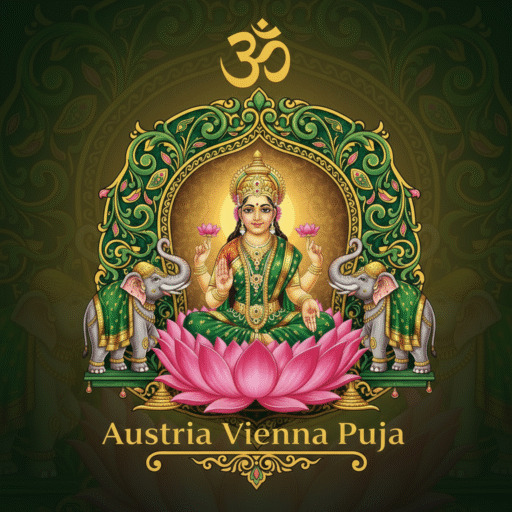

Hindu Hair Cutting Ceremony | Chudakarana Samskara Childhood Transformation

Chudakarana Samskara: The Sacred First Shaving
Hindu Hair Cutting: A Cultural Perspective
The Chudakarana Samskara—literally “hair removal ceremony”—represents one of the most significant childhood rituals in Hindu tradition. Typically performed between ages one and three, this ancient ceremony marks the child’s symbolic transition from infancy toward conscious awareness and spiritual development.
The ceremonial removal of the child’s birth hair—believed to carry remnants of previous life impressions—prepares the child spiritually for the conscious journey ahead. Rather than merely hygienic practice, Chudakarana Samskara represents spiritual purification and awakening of latent consciousness.
Spiritual Significance
Removal of Accumulated Impressions
Hindu philosophy understands that each individual carries impressions (samskaras—not to be confused with the ceremonies of same name) from previous lives. Birth hair, collected during intrauterine development, carries these subtle impressions.
Ceremonial hair removal symbolizes cleansing of these karmic residues, enabling the child to begin conscious development unburdened by accumulated past patterns. The new hair growing after this ceremony represents fresh beginning, clean slate for current life’s conscious development.
Transition from Infancy to Awareness
Chudakarana Samskara marks the child’s developmental shift from purely instinctive infancy toward emerging consciousness and self-awareness. The ceremony acknowledges this maturation while invoking divine blessings supporting healthy psychological and spiritual development.
Formal Community Recognition
Through this ceremony, the child is formally introduced to community as developing individual rather than merely helpless infant. The ritual creates space for collective blessing and collective intention supporting the child’s growth toward responsible adulthood.
Ritualistic Procedures
Auspicious Timing Determination
The optimal timing for Chudakarana Samskara is determined through astrological consultation considering:
Child’s birth chart
Lunar calendar positions
Planetary movements
Traditional Nakshatra (birth star) considerations
This astrological precision ensures ceremony occurs during genuinely auspicious cosmic conditions supporting the child’s spiritual development.
Ceremonial Process
Temple or Home Setup: The ceremony typically occurs in temple environment or home altar appropriately prepared. Sacred fire is established (or represented according to tradition).
Purification Rituals: Initial purification ceremonies establish sacred space and invoke divine blessings.
Hair Removal: The priest ceremonially removes small portion of the child’s hair while reciting specific mantras. In some traditions, hair removal occurs near a sacred river or water source.
Application of Sacred Paste: Auspicious paste (typically made from sacred herbs and minerals) is applied to the child’s head.
Mantras and Prayers: Throughout the process, specific mantras are recited invoking protective deities and spiritual principles supporting the child’s development.
Family Blessings: Family members offer blessings to the child, establishing collective intention for healthy growth.
Post-Ceremony Practices
After Chudakarana Samskara, specific practices are traditionally observed:
Child’s head remains uncovered for specific period allowing new hair to grow
Special dietary considerations supporting healthy hair growth
Continued spiritual attention and protective practices
Regional Variations
Different Hindu traditions observe Chudakarana Samskara with variations:
South Indian Traditions: Often emphasize temple environment, specific deity blessings, and particular mantras from regional tradition.
North Indian Traditions: May involve specific priest lineages, particular ritual procedures, and regional customizations.
Gujarati and Other Traditions: Each maintains specific procedures honoring their ancestral approaches while maintaining core spiritual principles.
A qualified priest guides families through procedures appropriate to their specific tradition and current circumstances.
Contemporary Significance
Modern Hindu families—particularly in diaspora contexts—increasingly reclaim Chudakarana Samskara traditions despite practical challenges. The ceremony provides:
Spiritual foundation: Conscious marking of childhood development
Cultural connection: Direct link to ancestral practices
Community participation: Family and friends’ collective blessing
Psychological benefit: Ritual marking supporting child’s sense of belonging
Spiritual protection: Invocation of divine guidance for child’s development
How to Arrange Chudakarana Samskara
Timing Consultation
Connect with qualified priest or astrologer for astrological timing analysis. The optimal date considers child’s birth chart and cosmic conditions.
Tradition Specification
Clarify your family’s specific tradition ensuring the priest performs ceremony according to your customary procedures.
Venue Preparation
Coordinate with temple or home altar preparation. Discuss with priest regarding necessary arrangements.
Family Participation
Gather family members for collective blessing and support. Consider inviting significant people from child’s life.
Priest Coordination
Professional priest guidance ensures ceremony maintains Vedic authenticity while accommodating family preferences and modern circumstances.
The Eternal Message
Chudakarana Samskara reminds that childhood represents sacred developmental period requiring conscious spiritual attention. The ceremony honors both the child’s emerging consciousness and the family’s role in supporting healthy development grounded in spiritual principles.
Arrange Your Child’s Chudakarana Samskara
When your child approaches the appropriate age, arrange this transformative ceremony connecting them consciously to ancestral traditions while invoking divine blessings for their development.
Authoritative Academic Sources
Britannica Resources
https://www.britannica.com/topic/Veda
https://www.britannica.com/topic/Dharma-shastra
https://www.britannica.com/topic/Sanskrit-language
https://www.britannica.com/biography/Panini-Indian-grammarian
https://www.britannica.com/topic/Hinduism/Practice
https://www.britannica.com/topic/Advaita-school-of-Hindu-philosophy
https://www.britannica.com/topic/Vedic-religion
Stanford Encyclopedia
https://plato.stanford.edu/entries/logic-india/
https://plato.stanford.edu/entries/god-ultimates/
Academic Journals & Databases
https://jstor.org
https://pdcnet.org
https://ijhp.bgrfuk.org
Oxford Centre for Hindu Studies
https://ochs.org.uk
https://ochsonline.org
Government & Archive Resources
Research Papers
https://papers.ssrn.com
Educational Institutions
https://vedanet.com
https://vedicscience.net
https://bhishmaiks.org
https://vedicwellnessuniversity.com
Additional Academic Resources
https://ijnrd.org
https://takshila.org.in
https://wisdomlib.org
https://cambridge.org
https://academic.oup.com
https://pmc.ncbi.nlm.nih.gov
Internal Resources
Visit our comprehensive guide to Vedic rituals and their significance at https://austriaviennapuja.com/vedic-rituals-europe.
Explore our guide to regional wedding variations at https://austriaviennapuja.com/regional-wedding-traditions.
Learn about Muhurat calculation and Vedic astrology at https://austriaviennapuja.com/muhurat-calculation-services.
Discover the meaning and significance of sacred mantras at https://austriaviennapuja.com/sacred-mantras-explanation.
